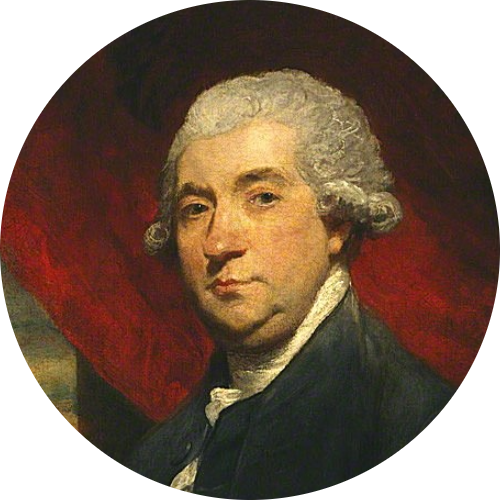The Poker Club was an Edinburgh social club, founded in early 1762 by the literati and intellectuals of Edinburgh, supposedly in support of a local militia, which the Scots had been denied since the Jacobite rising in 1745. Its real purpose, however, seems to have been the social interaction and entertainment of its exclusive members, most of whom were also members of the more larger Select Society (founded 1754). Boswell didn't join the society himself, but quite a few of his friends and acquaintances were members.
According to Francis Hirst's biography of Adam Smith, the club was founded upon the ashes of the Select Society, which had declined sharply in the first years of the 1760s. Hirst also writes that "The cause to be agitated was the establishment of a Scotch Militia on national lines, to be followed, as some of its radical members hoped, by a parliamentary reform which would "let the industrious farmer and manufacturer share at last in a privilege now engrossed by the great lord, the drunken laird, and the drunkener bailie."5
In the early days, the Club met in "Thomas Nicholson's tavern, near the Mercat cross, where over a shilling dinner and modest quantities of sherry and claret, lively discussions ensued on political topics and members were freely 'roasted' for their views".6 Most writers agree, however, that the aim of the club was as much social as it was political. In 1769, owing to a quarrel with Nicholson, the club removed its headquarters to Fortune's Tavern, where the excessive charges led to a diminished attendance.7
Concerning the name of the club, James Nasmyth in his autobiography wrote that "In my father's early days he was a member of a very jovial club, called the Poker Club. It was so-called because the first chairman, immediately on his election, in a spirit of drollery, laid hold of the poker at the fireplace, and adopted it as his insignia of office. He made a humorous address from the chair, or "the throne," as he called it, with sceptre or poker in hand; and the club was thereupon styled by acclamation "The Poker Club." I have seen my father's diploma of membership; it was tastefully drawn on parchment, with the poker duly emblazoned on it as the regalia of the club."8 Nasmyth's father was the renowned portrait painter Alexander Nasmyth (b. 1758), who does not appear on the membership list according to Tytler (see below). He may have been a member of the younger Poker Club, which was founded by the next generation of Edinburgh intellectuals, inspired by the original poker club, in 1786.
The Poker Club was at its best during the first ten years of its existence, but it kept meeting occasionally until January 3rd, 1784 when it effectively ceased to exist.
In 1768 the membership consisted of the following notable Edinburgh citizens, probably mentioned in the order in which they joined:
1. Lord Elibank.
2. Dr. Alexander Carlyle.
3. Dr. Adam Fergusson, Professor of Moral Philosophy.
4. Mr. John Fordyce.
5. Mr. John Home.
6. Mr. George Dempster, Advocate.
7. Mr. James Fergusson of Pitfour, Advocate.
8. Mr. Andrew Crosbie, Advocate.
9. Mr. William Johnston Pluteney, Advocate.
10. Mr. William Nairne of Dunsinnan, Advocate.
11. Mr. David Hume.
12. Mr. James Edgar.
13. Mr. John Adam.
14. Rev. Dr. William Robertson.
15. Mr. Andrew Stuart of Torrens, writer to the Signet.
16. Mr. Adam Smith.
17. Mr. John Dalrymple, Advocate.
18. Rev. Dr. Hugh Blair.
19. Sir John Whitefoord, Advocate.
20. Mr. Baron Mure.
21. Mr. David Ross of Ankerville, Advocate.
22. Dr. Joseph Black.
23. Lord Eliock.
24. Mr. Baron Grant.
25. Mr. Hay Campbell, Advocate.
26. Mr. Dundas of Dundas.
27. Mr. John Clerk of Eldin.
28. Lieutenant-Colonel John Fletcher.
29. Sir James Stewart of Coltness, Advocate.
30. Mr. Hume of Ninewells.
31. Mr. Andrew Grant.
32. Colonel Campbell of Finnab.
33. Mansfeldt Cardonnel, Commissioner of the Customs.
34. Mr. Alexander Fergusson of Craigdarroch, Advocate.
35. Mr. Robert Chalmers.
36. Mr. Robert Cullen, Advocate.
37. Mr. George Brown of Elieston.
38. Sir Adam Fergusson, Advocate.
39. Professor John Robison.
40 Mr. William Gordon, Advocate.
41 Mr. George Hume, writer to the Signet.
42. Hon. Henry Dundas, Lord Advocate.
43. Captain John Elliot.
44. Mr. James Russell, Surgeon.
45. Ambassador Robert Keith.
46. Mr. William Graham of Gartmore.
47. Mr. Alexander Home, Clerk of Session.
48. Earl of Glasgow.
49. Mr. Baron Norton.
50. Mr. George Fergusson, Advocate.
51. Sir John Halket, Baronet.
52. Duke of Buccleugh.
53. Earl of Glencairn.
54. Andrew Fletcher of Saltoun.
55. Lord Mountstuart.
56. Mr. Baron Gordon.
57. Lord Dundas.
58. Mr. Kennedy of Dunure.
59. Lord Binning.
60. Mr. Mark Pringle, Advocate.
61. Mr. John Rutherford of Edgerston, Advocate.
62. Earl of Hadinton.
63. Mr. William Muirhead.
64. Mr. William Miller of Glenlee, Advocate.
65. Marquis of Graham.
66. Sir James Johnston, Baronet.
Source: Tytler, Alexander Fraser (1807). Memoirs of the Life and Writings of the Honourable Henry Home of Kames. Appendix VIII.2. The list in Tytler is reproduced from an original in the manuscript of the Memoirs of the Reverend Dr. Alexander Carlyle
